Oscar Contender ‘My Favorite War’ Uses Animation to Tell a Resistance Story
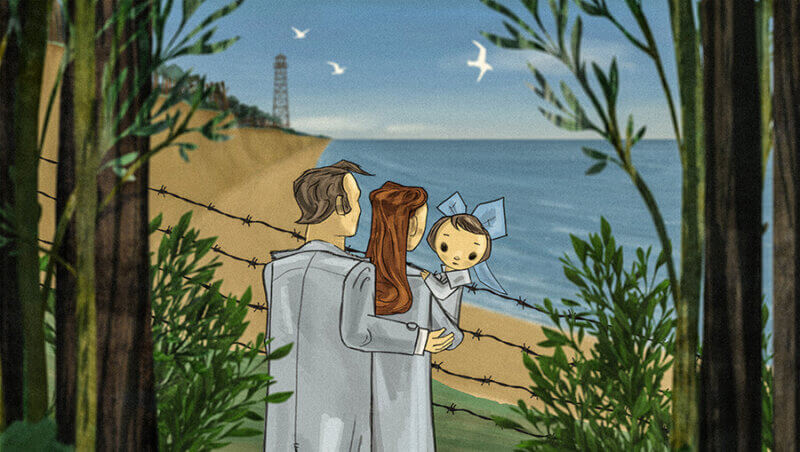
Can young people find their own power to do what’s right—and maybe even change the world? That is a question raised by Ilze Burkovska-Jacobsen’s autobiographical animated feature My Favorite War, which charts the director’s coming-of-age experience in the Cold War-era Latvia. This animated memoir picked up Annecy’s Contrechamp award and is now competing for the Oscars (Best Animated Feature) and Annies (Best Indie Feature).
In this story of identity, truth, and loyalty, young Ilze discovers the bones of a German soldier in her sandbox. As she continues to face the horror of war threats at school, the difference between the reality of Soviet life and propaganda that denies what the people are experiencing, and even the clash of beliefs among the people she loves most, Ilze questions what is buried beneath state propaganda and sets off on a journey of growth and discovery.
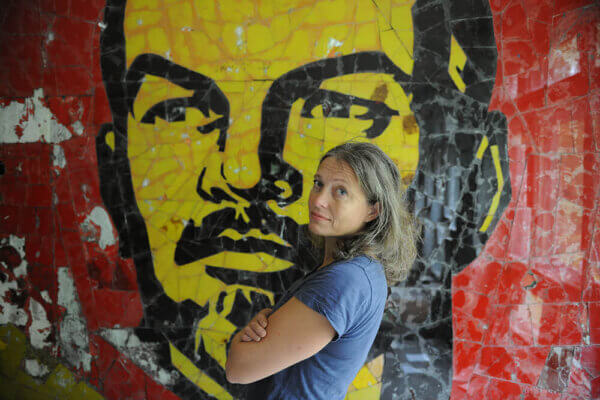
Portrait of Ilze Burkovska-Jacobsen
My Favorite War explores the choices a young girl in trying circumstances must make at a very young age, and the wisdom she gains, as well as the courage to speak out that she finds within herself. While the film captures the experience of childhood discovery, as Ilze creates her own escape route from the totalitarian regime of Soviet Latvia, its creative blend of cut-out animation and documentary footage aims its anti-war and pro-democracy message at a global, adult audience. As the jury at the Annecy International Animated Film Festival described, My Favorite War is “a story from the recent past that resonates with our lives today.”
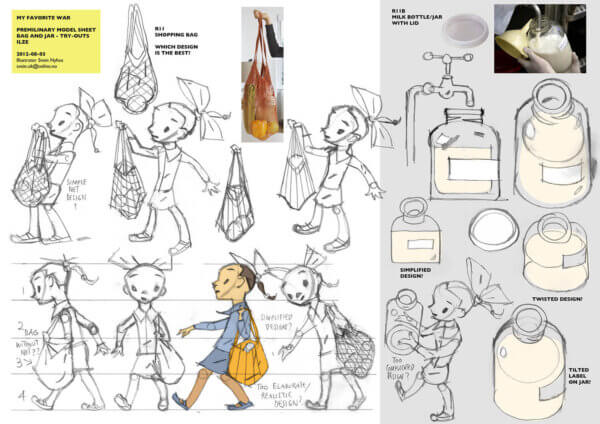
Period-correct Latvian details include netted shopping bag and milk bottle
In telling a Soviet-era story and by working with a Latvian team of young animators, My Favorite War draws on the deep, rich tradition of Soviet animation. Together with her husband/producer Trond Jacobsen, their Norwegian Bivrost Film produced My Favorite War with Guntis Trekteris (Ego Media) in Latvia. As Soviet filmmakers navigated state censorship, the abstraction and imagination of animation offered an uniquely rich mode of expression to artists, whether in children’s animation like the stop motion classic Cheburashka and the beloved Soviet adaptation of Winnie the Pooh, or in more overtly artistic works, like Yuri Norstein’s 1975 masterpiece Hedgehog in the Fog.
In fact, Hedgehog has been a major influence on Burkovska-Jacobsen’s work. She describes it as a film with “so many dimensions. A spiritual film—a simple story children can identify with, visually very mysterious—with cut-out animation through glass plates (fog is a character in the film!). It’s my favorite animated film. There is no clear evil that punishes you. There is just this undefined melancholy in it. You feel human watching with longing for peaceful moments in your life.”
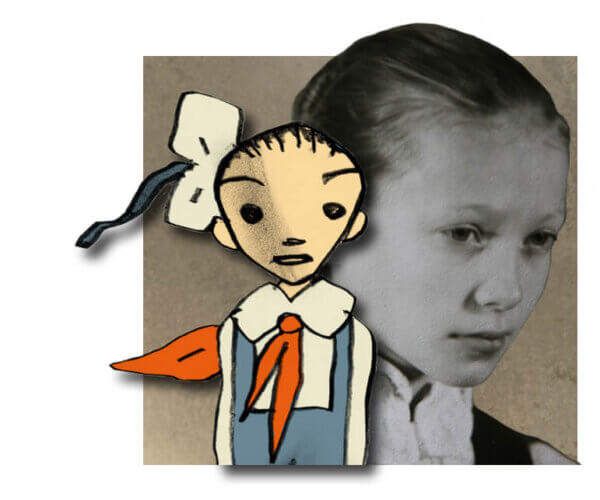
Early sketch of Ilze
Within the context of Soviet animation, Latvia developed its own specific tradition of animated film. The National Film Center of Latvia and the Latvian Animation Association have outlined their country’s animation history as follows:
“Latvia began with animation for children. For Soviet-era directors Arnolds Burovs, Roze Stiebra and Ansis Bērziņš, animation was a way to remain genuine and present their own world view, encoded in a very imaginative, pictorial language and at once thoughtful towards its viewer – the child. Animation was also a way in which to avoid ideological pressure.
‘I think that the decision to make children’s films took place beyond my conscious will,’ says Stiebra, the grandmother of Latvian drawn animation….`I did not set out to make films for children and devote my whole life to this endeavor. But the conditions were favorable. Censorship was very strict; those were very difficult years….The Soviet regime strived to centralize and Russify all cultural content, and therefore animation was a way in which – quietly and calmly, through stories and Latvian literature – to preserve that part of the nation’s identity that is rooted in language, folklore and a sense of belonging to this land.’
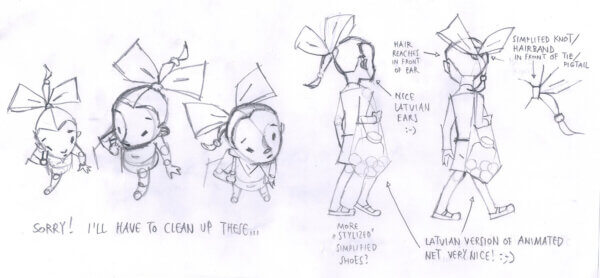
Ilze character notes
So, how do Ilze and My Favorite War – a film about childhood, aimed at an adult audience – fit into this tradition? While she grew up in Soviet-era Latvia, an experience that shaped her personal and artistic interests and consciousness, her professional career began when she began studying journalism in the free environment she found in Norway, where she has resided full-time since 1990.
Throughout her career, she has synthesized the social consciousness she developed in childhood, her journalistic training, and artistic expression. Burkovska-Jacobsen has directed eight feature documentaries, as well as five documentary series for children, which have screened in Norway and abroad. The production company she co-owns, Bivrost Films, created the Emmy-winning short animated series My Body Belongs to Me, which explored childhood sexual abuse.
While My Favorite War was created as a deeply personal story, it has connected with audiences around the globe. The film is currently eligible for Oscar and Annie Awards, and it has already won distinctions in the Palm Springs International Animated Film Festival, Annecy’s Contrechamp competition, the French critics’ award in Annecy (France), a Special Distinction Award in Bucheon International Film Festival (Korea), the Grand Prix at the New Chitose Airport Animation Festival (Japan), and it was awarded Best Animation Director and Best Animated Film in Latvia. It has also been picked up by EastWest Film Distribution for world sales, and is available on Vimeo On Demand in select countries. While the details of Ilze’s story may be specific and unique, My Favorite War reveals how her courage – as well as her determination to tell her story – resonates with people who believe in creating a better world, all across the globe.
Follow My Favorite War on Facebook and Instagram.
Animators unite! Win a Soviet pin!
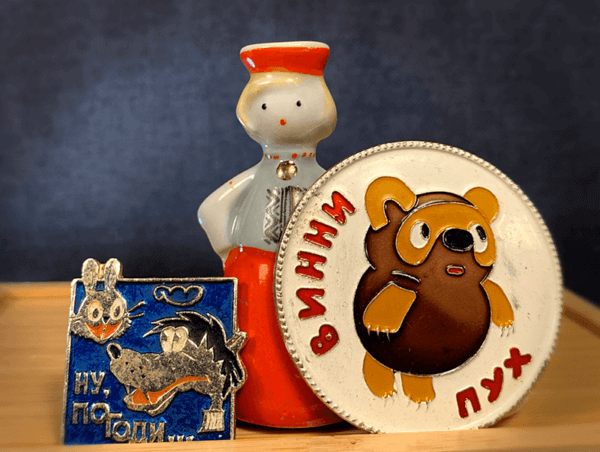
Animators unite! Win a Soviet pin!
Win one of these collectables: pins of Soviet Winnie The Pooh, Wolf & Rabbit or a Latvian figurine used in the film. All you need to do is accessorize (add hats, glasses, flowers, words, anything at all) to the dictators that are featured on the posters of this ‘rogues’ gallery’ (click here to download the artwork).
Create a Photoshop file (in 4K resolution) and fill the frame with transparency. Send your image – and a short explanation of the inspiration for your submission – to myfavoritewarfilm@gmail.com before March 15.
In the mean time, follow us on Instagram @my_favorite_war and meet some of our animators on YouTube @myfavoritewar.


